Are you ready to learn how to make rubbery slime soft and stretchy? In this guide, I will walk you through the steps to achieve the perfect consistency every time.
To make rubbery slime soft and stretchy, it is important to understand the ingredients and their role in the slime-making process. The main components of slime are a polymer, typically glue, and an activator. The activator, such as saline solution, baking soda, liquid laundry detergent, or borax, is responsible for linking the polymer molecules together, creating a stretchy texture.
When making slime, it is recommended to add the activator slowly to avoid over-activating the slime, which can make it too firm and break apart easily. Using white glue, taking your time for the activator to work, and adding dish soap, water, or lotion gradually if the slime is overactivated can help in achieving a soft and stretchy consistency.
Storing the slime in an airtight container can also prevent it from drying out and losing its stretch. If the slime becomes too hard or rubbery, adding water, hand lotion, or lemon juice and heating and kneading it can help restore its stretchiness.
It is important to note that there is no single solution for making slime soft and stretchy, and experimentation is key to finding the right balance of ingredients.
Understanding the Ingredients and Their Role in Slime Making
Before we dive into the process, let’s first understand the key ingredients that make slime soft and stretchy. The main components of slime are a polymer, typically glue, and an activator. The polymer acts as a binding agent, holding the slime together, while the activator helps create the stretchy texture that we desire.
The activator plays a crucial role in slime making. It works by linking the polymer molecules together, forming a network that gives the slime its elasticity. There are various activators that can be used, such as saline solution, baking soda, liquid laundry detergent, or borax. Each activator has its own unique properties, so it’s important to choose the one that works best for your desired consistency.
To achieve the perfect soft and stretchy slime, it’s important to add the activator slowly. Adding it too quickly can lead to over-activation, resulting in a slime that is too firm and easily breakable. It’s recommended to use white glue as the polymer and allow sufficient time for the activator to work its magic. If the slime becomes overactivated, you can gradually introduce small amounts of dish soap, water, or lotion to soften it up. Remember, finding the right balance of ingredients may require some experimentation, so don’t be afraid to get creative!


Table: Slime Ingredients and Activators
| Ingredients | Activators |
|---|---|
| Polymer (typically glue) | Saline solution |
| Baking soda | |
| Liquid laundry detergent | |
| Borax |
“The activator plays a crucial role in slime making. It works by linking the polymer molecules together, forming a network that gives the slime its elasticity.”
Storing your slime properly is also essential to maintain its softness and stretchiness. Make sure to keep it in an airtight container to prevent it from drying out. This will help preserve its texture and keep it malleable for longer periods. Additionally, avoid exposing the slime to direct sunlight or extreme temperatures, as these can also affect its consistency.
If you find that your slime has become hard or rubbery over time, don’t worry! There are ways to restore its stretchiness. Try adding a small amount of water, hand lotion, or lemon juice to the slime and heat it for a few seconds in the microwave. Once heated, knead the slime thoroughly to distribute the added ingredients. This process can help soften the slime and bring back its original stretchy texture.
Remember, making soft and stretchy slime is not an exact science. It requires some experimentation to find the perfect balance of ingredients. Have fun, get creative, and don’t be afraid to try new techniques or ingredients. With a little trial and error, you’ll soon master the art of making rubbery slime that is soft, stretchy, and enjoyable to play with!
Tips for Adding the Activator for Optimal Consistency
Achieving the perfect slime consistency relies on adding the activator just right. Here are some tips to help you get that soft and stretchy texture.
1. Add the activator slowly: When incorporating the activator into your slime mixture, it’s best to add it gradually rather than all at once. This allows you to control the consistency and prevent over-activation. Slowly pour in the activator while continuously stirring the mixture until you achieve the desired texture.
2. Use a reliable activator: The type of activator you choose can greatly impact the final consistency of your slime. Saline solution, baking soda, liquid laundry detergent, and borax are commonly used activators. Experiment with different options to see which one works best for you. Remember to follow safety guidelines and use appropriate quantities.
3. White glue is your friend: When making slime, using white glue as your main polymer can contribute to a softer and stretchier result. The chemical composition of white glue makes it more conducive to achieving the desired consistency. So, opt for white glue instead of clear glue if you prefer a more flexible and pliable slime.
4. Allow time for activation: After adding the activator, give your slime mixture some time to work its magic. The activator needs time to react with the polymer molecules, creating the bond that gives slime its stretchiness. Patience is key here, so resist the temptation to add more activator if the results are not immediate.
Remember, every slime-making journey is unique, and experimentation is key to finding the perfect balance of ingredients for your desired slime consistency. Be patient, have fun, and don’t be afraid to get creative!
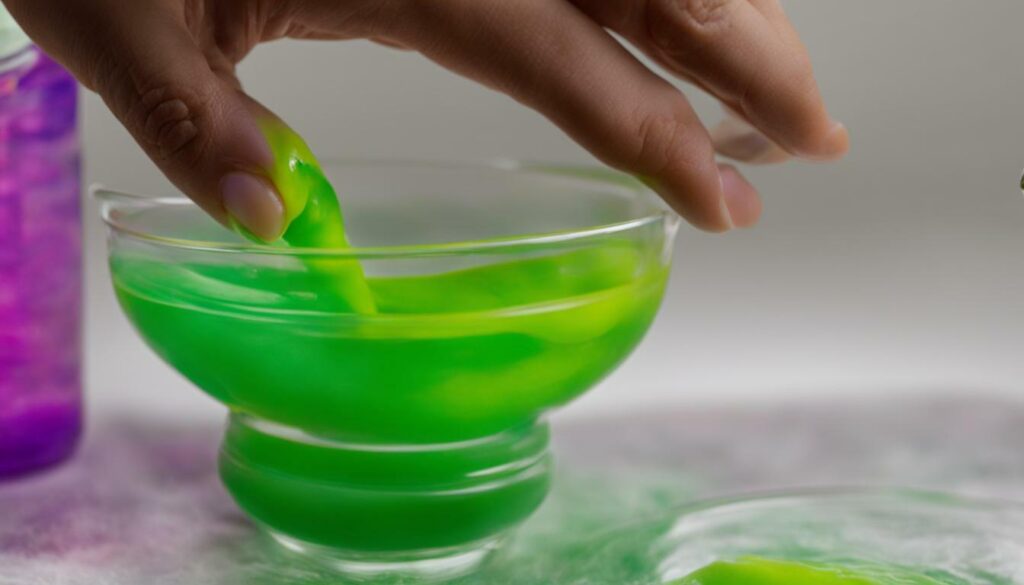

| Tips for Adding Activator: | Advantages: |
|---|---|
| Slowly add the activator | Allows for better control of consistency |
| Choose a reliable activator | Experiment with different options to find the best one for you |
| Use white glue | Results in a softer and more stretchy slime |
| Allow time for activation | Gives the activator and polymer molecules the opportunity to bond |
Storing Slime to Maintain Stretchiness
You’ve made your perfect slime, now it’s time to learn how to store it to keep it soft and stretchy. Proper storage is essential in preserving the texture and longevity of your slime. The key is to use an airtight container that will prevent the slime from drying out and losing its stretch.
An airtight container creates a sealed environment that locks in moisture, ensuring your slime stays soft and pliable. Look for containers with a secure lid or consider using resealable bags specifically designed for storing slime. These options will provide the necessary seal to keep air and moisture out, maintaining the desired consistency of your slime.
Remember to remove any excess air from the container or bag before sealing it. This extra step will help prevent air exposure, which can cause the slime to dry out and become less stretchy. Squeezing out the air and tightly sealing the container will ensure that your slime remains in its optimal state.
To keep track of your different slime creations, you may also want to label each container with the date and type of slime inside. This way, you can easily identify and select the desired slime when you’re ready to play or experiment. By following these storage tips, you can extend the lifespan of your slime and continue to enjoy its soft and stretchy properties.
Table 1: Recommended Containers for Storing Slime
| Container Type | Features |
|---|---|
| Airtight Plastic Containers | Secure lids that provide a tight seal |
| Resealable Plastic Bags | Convenient for storing smaller batches of slime |
| Glass Jars | Durable and offer a visually appealing storage solution |
| Silicone Containers | Flexible and non-stick, making it easy to remove slime |
By investing a little extra effort in proper storage, you can keep your slime soft and stretchy for longer periods. Remember to seal your slime in an airtight container, remove excess air, and label each container for easy identification. With these simple steps, you’ll be able to enjoy your slime creations to the fullest.
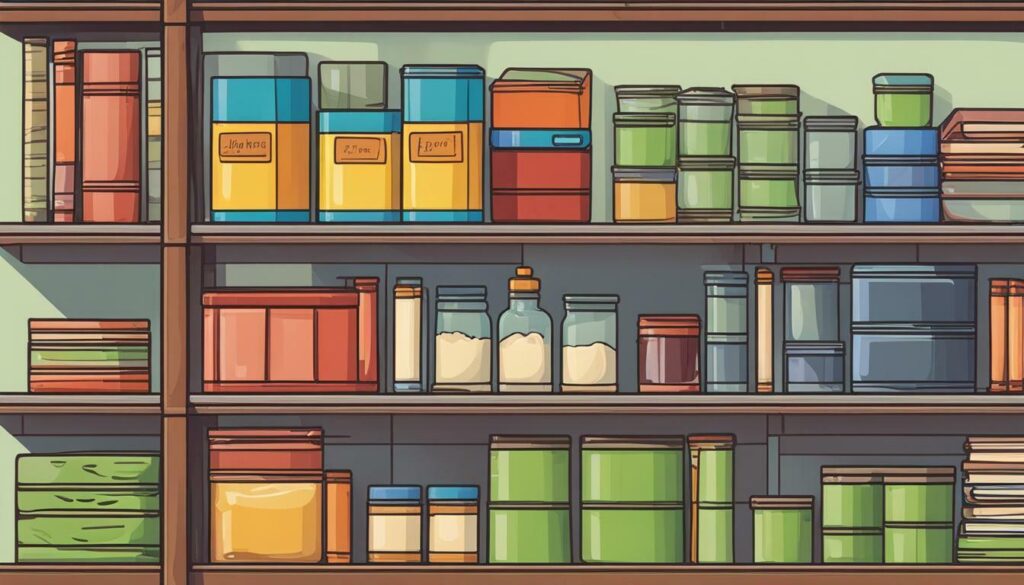

Restoring Hard or Rubbery Slime
Oops! Did your slime turn out too hard or rubbery? Don’t worry, there are ways to bring it back to its soft and stretchy form. Restoring slime is all about finding the right techniques and ingredients to rejuvenate its texture. Here are some tips to help you salvage your slime:
- Add water: Sprinkle a few drops of water onto your hard or rubbery slime and knead it thoroughly. The water will help hydrate the slime and make it more pliable. Be careful not to add too much water as it can make the slime too sticky.
- Try hand lotion: Apply a small amount of hand lotion to your slime and knead it in. The lotion will add moisture to the slime, making it softer and more stretchy. Start with a small amount and gradually add more if needed.
- Use lemon juice: Squeeze a few drops of lemon juice onto your slime and mix it in. The citric acid in the lemon juice can help break down any clumps and restore the slime’s elasticity. Remember to knead the slime well after adding the lemon juice.
Remember, every slime recipe may require different methods for restoration. Experimentation is key to finding the best solution for your specific slime. Keep in mind that adding too much water, lotion, or lemon juice can alter the slime’s consistency, so start with small amounts and gradually add more if needed. With a little patience and trial and error, you can revive your hard or rubbery slime and enjoy its soft and stretchy goodness once again!
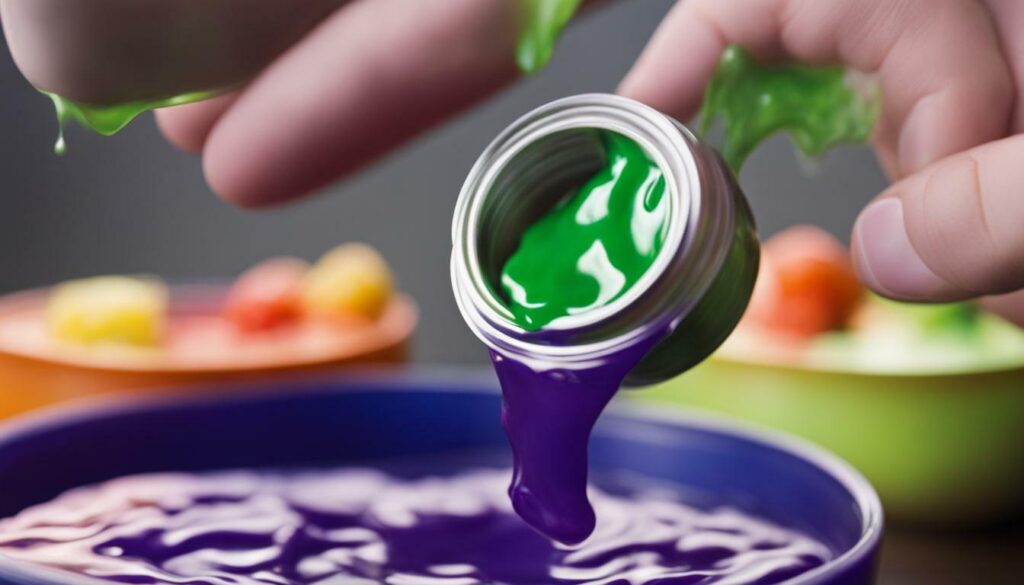

Experimentation Is Key
Making slime is all about experimenting and finding what works best for you. Let your creativity shine and embrace the process! When it comes to achieving the perfect consistency of rubbery slime, there are a few factors to consider. Understanding the role of the ingredients is crucial, as different combinations can yield different results. The polymer, usually glue, serves as the base for your slime, while the activator, such as saline solution, baking soda, liquid laundry detergent, or borax, helps create that stretchy texture.
To achieve the desired consistency, it’s important to add the activator slowly. Over-activating the slime can make it too firm and prone to breaking apart easily. Take your time and find the right balance. It’s recommended to use white glue and allow sufficient time for the activator to work its magic. However, if you find that your slime is overactivated, don’t worry! Gradually introducing small amounts of dish soap, water, or lotion can help soften the slime and restore its stretchiness.
Storing your slime properly is also essential in maintaining its stretch and softness. Keeping it in an airtight container can prevent it from drying out and becoming less pliable. Remember, the more care you put into storing your slime, the longer it will last and remain enjoyable to play with.
While there are tips and guidelines to help you achieve a soft and stretchy slime, it’s important to note that there is no one-size-fits-all solution. Each slime recipe and mixture is unique, so don’t be afraid to experiment. Try different ratios of ingredients, test out alternative activators, and have fun exploring what works best for you. After all, the joy of making slime lies in the process of discovery!
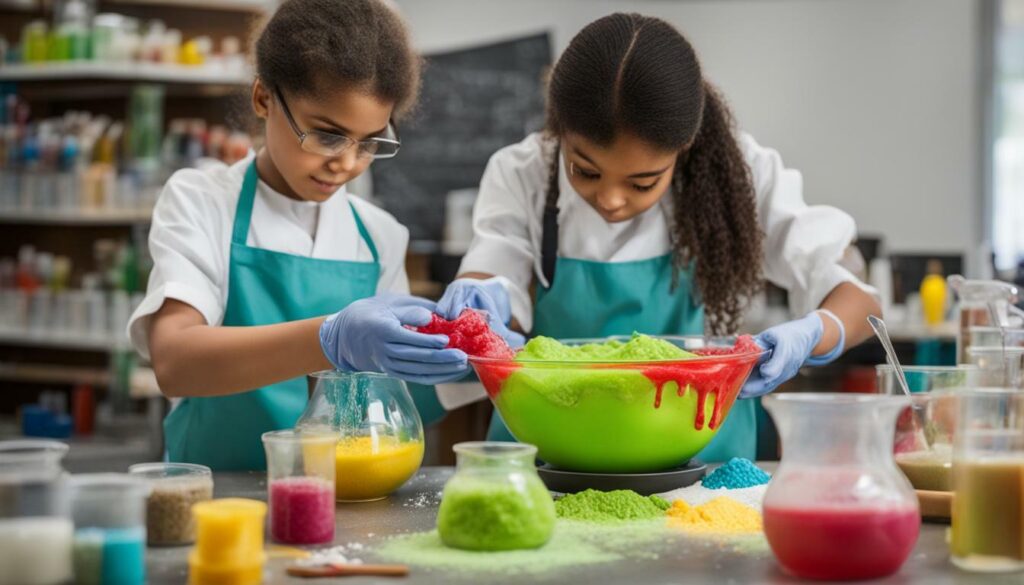

| Ingredients | Role |
|---|---|
| Polymer (Glue) | Provides the base for the slime |
| Activator (Saline Solution, Baking Soda, Liquid Laundry Detergent, or Borax) | Links the polymer molecules together, creating a stretchy texture |
“The more you experiment with slime, the more you discover its endless possibilities.”
Quick Tips:
- Add activator slowly to avoid over-activating the slime.
- Use white glue for better results.
- Gradually introduce additional ingredients such as dish soap, water, or lotion if the slime becomes overactivated.
- Store slime in an airtight container to maintain its stretchiness.
Congratulations on learning how to make rubbery slime soft and stretchy!
With the right ingredients and a little experimentation, you’ll be creating perfect slime every time. Understanding the role of each ingredient is crucial in achieving the desired consistency. The main components of slime are a polymer, typically glue, and an activator. The activator, whether it’s saline solution, baking soda, liquid laundry detergent, or borax, works to link the polymer molecules together, resulting in a stretchy texture.
When making slime, it’s important to add the activator slowly to avoid over-activating the slime. Over-activated slime can become too firm and break apart easily. To achieve a soft and stretchy consistency, try using white glue and allow sufficient time for the activator to work its magic. If the slime becomes overactivated, gradually introduce dish soap, water, or lotion to restore its desired texture.
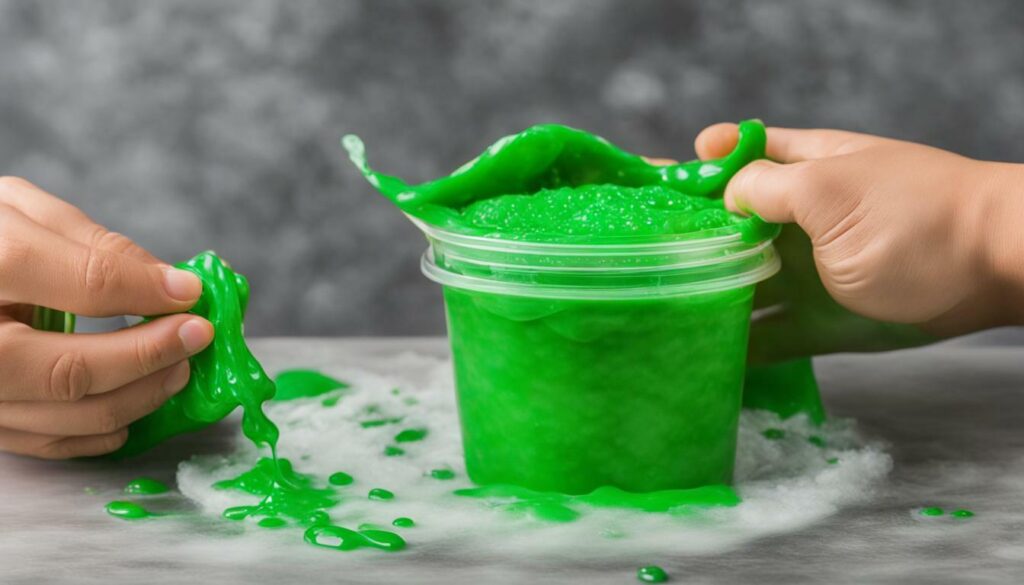

Proper storage is key to maintaining the stretchiness of your slime. Make sure to store it in an airtight container to prevent it from drying out. This will help preserve its softness and flexibility for longer periods of time. And if your slime becomes too hard or rubbery, don’t worry! There are ways to revive it. By adding water, hand lotion, or lemon juice and then heating and kneading the slime, you can restore its stretchiness.
Remember, there is no one-size-fits-all solution when it comes to making slime soft and stretchy. It’s all about experimenting and finding the right balance of ingredients that works for you. So have fun, get creative, and enjoy the process of making your own homemade slime!
Resources and Next Steps
If you’re eager to dive deeper into the world of rubbery, stretchy slime, here are some resources and next steps to help you continue your slime-making adventure.
1. Explore Different Slime Recipes: There are countless variations and recipes for making homemade slime. Experiment with different types of glue, activators, and add-ins to create unique textures and effects. Online resources such as slime blogs and recipe websites can provide inspiration and guidance for trying out new slime concoctions.
2. Join Slime Enthusiast Communities: Connect with fellow slime enthusiasts to share tips, tricks, and troubleshooting advice. Online forums and social media groups dedicated to slime-making can be a great source of support and inspiration. Engaging with other slime makers can help you discover new techniques and stay up to date with the latest trends in the slimiverse.
3. Find Quality Slime-Making Supplies: To create the best and most stretchy slime, it’s important to use high-quality ingredients and materials. Look for reputable online or local suppliers that offer a wide range of slime-making supplies, including glues, activators, pigments, and add-ins. Quality supplies can make a significant difference in the final consistency and stretchiness of your slime creations.
Remember, making soft and stretchy slime is all about understanding the ingredients, experimenting with different ratios, and finding what works best for you. Don’t be afraid to get creative and have fun along the way. Happy slime-making!
